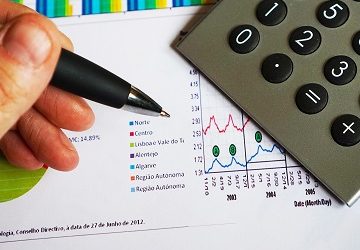Refer back to part one for intro to Reporting and Business Intelligence for professionals in Accounting and Finance.
How to Become Analytically Mature: Data Science
Examples of Tools Considered:
SAS, RapidMiner, Knime, SPSS, Rattle
What is Really Important:
Probability and Statistics; Computer Science; Data Architecture; Languages: Spark / Scala, PIG, Python, R
What is “Data Science” Exactly?
Data Science, the coolest job right now in business, and the one with the most transient definition. To me, there are two types of data scientists:
1. The business focused Data Scientist: An effective business Data Scientist combines a data analyst, business intelligence analyst, statistician, and computer programmer into one individual. They are able to write applications which acquire data, run probabilistic models over the data, interpret the output, and interpret the results to their audience in a way that benefits their organization.
2. Data Science Engineers: Typically holding a PhD or two and multiple publications under their belt, a data science engineer writes new models and applications used by the business data scientists. These guys cost a fortune and are usually self-employed or work for universities and / or Google. Most management accountants will never cross paths with a data science engineer outside of them justifying a $400 / hour SOW they just presented your R&D department.
So the business data scientist is what most organizations need, particularly when considering the needs of management accounting.
Moving Beyond “Just” Business Intelligence
Further considering management accounting, what value does a data scientist bring to a management accounting team? As we mentioned before, a business focused data scientist understands data and data applications to explore and create predictions against that data – meaning, a whole lot of data can be chewed up by a data scientist and only the meaningful parts are returned.
Imagine you need to do a supply chain analysis on customer payments. There are POs, Invoices, and Payments in your internal transactional system and vendor details in your data warehouse. A data scientist will be able to create a program to not only show trends in the order frequency and payment times, but also create a predictive models to understand the seasonal trends (i.e. the relatively consistent rise and fall of activity during a given time period) for similarly behaving groups of businesses.
With a seasonal model we can now better predict purchasing for our inventory and budget based on payments; however, a data scientist would not stop there. Purchasing is based on more than seasonal trends, to enrich the model they would construct web scraping tools to get general economic indicators like employment and GDP, as well as specific indicators like the vendor’s’ annual and quarterly reports, the general sentiment of their social media, even monitoring news stories to get any data that might impact their purchasing behavior. They would also grab any marketing data from your internal sources to see how marketing impacted purchasing.
Once all this data was acquired, they would run a model on top of it to see not only how all these different types of data impacted purchasing and payment, but also how long they took to impact (this is called “lagging”). For example, it make take a few days or weeks for marketing to make an impact on an order, the dollars spent on marketing for a given day need to be compared to sales/purchases/payment/etc for many days later to find all possible relationships.
This forward looking behavior of data science is why it is “Predictive” analytics. The relationship between a given event and some important value (such as sales) some time later allows us to have an understanding of how an event today will impact our performance in the future.
Let’s Go Even Further
Just because your data science team has built an amazing series of applications – pulling in data from hundreds of sources and mathematically determining how your business is going to perform doesn’t mean we have to stop there.
We now know what factors influence our customers, so we need to adjust our inventory based on the predicted order frequency. But why let the procurement know through a report or email? By the time someone reads that report and makes a decision, the time to take advantage of the prediction will have already passed. Instead, an analytically mature company will allow their data scientists to construct an automated process.
 Automation of processes based on predictive analytics is quantum leap in analytics maturity, and one that very few organizations attempt, let alone are successful in it. In the above example, depending on the cost / benefit of order size vs. inventory holding cost, a pseudo “Just In Time” Inventory model would be developed with an automated process submitting new orders for inventory based what the customer will order instead of what the customer did order.
Automation of processes based on predictive analytics is quantum leap in analytics maturity, and one that very few organizations attempt, let alone are successful in it. In the above example, depending on the cost / benefit of order size vs. inventory holding cost, a pseudo “Just In Time” Inventory model would be developed with an automated process submitting new orders for inventory based what the customer will order instead of what the customer did order.
At this point our example begins to move into the territory of “Internet of Things” or IOT. The applications begin talking to each other – the predictive model say “Inventory Bot, you need to order 1000 widgets because Celebrity was seen using a widget in core demographic” but the inventory bot would say “We have 300 extra widgets from last celebrity prediction, revise model.” Creating a self-learning or Artificially Intelligent algorithm – freeing procurement to stop worrying about the day to day operations and provide more valuable services such as new vendor identification and contract negotiation.
In our follow-up post we’ll discuss the skills necessary to succeed in the current business environment for accounting and finance professionals.


